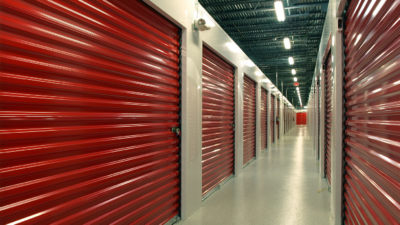Occupier activity across the United States continues to be robust, particularly in bulk industrial space 100,000 square feet and larger. Over the past 12 months (October 1, 2017 throughSep 30, 2018) 1,877 industrial (warehouse, manufacturing, flex) transactions (new lease, user sales, renewals) have signed in spaces 100,000 square feet and larger, totaling 483 million square feet. Slightly higher than the 1,750 transactions total of 405 million square feet in the 12 months prior. The average size of a bulk transaction was 257,000 square feet — much higher than the 232,000 square feet average the previous year. The increase in size range was a direct result of third-party logistics and packaging companies (3PLs) taking larger chunks of space compared with the same time last year.

While e-commerce continues to get all the press, they only made up 11% of the transactions signed the past 12 months — in line with percentage of total retail sales e-commerce accounts for. The top remains 3PLs who signed 131 million square feet of bulk industrial deals the past 12 months, 29% of the total transactions signed. 3PLs who offer logistics and warehousing services for retailers and wholesalers who choose to outsource, remain the top occupier of industrial space because of the sheer volume of companies who service every industry in the business. The top 3PL occupiers in the past 12 months were UPS and XPO Logistics, who both signed transactions totaling more than 6 million square feet.

E-commerce occupiers continue to need buildings much larger than other occupier types, as the average e-commerce transaction size in the past year totaled 530,000 square feet, double the overall average for a bulk industrial building. For the fourth consecutive year, Amazon.com was the top e-commerce and overall occupier of industrial space, signing transactions totaling 27 million square feet. Walmart also continues to expand its e-commerce distribution capabilities signing 2.6 million square feet of new deals. While that is good enough for 10th in the country, it is only 10% of the distribution space Amazon occupies. Walmart is not leasing the same amount of space as Amazon because it can use its vast inventory of big-box retail stores across the country as final-mile distribution centers.

The Southeast U.S. remained the top region of choice for bulk industrial occupiers with 27% of the bulk transactions signed in the region. Both industrial and manufacturing occupiers continue to move into the market in droves because of the region’s growing population and significant logistics advantages. At the time of this report, more than 70 million people lived in the Southeast region, and this is expected to lead the nation in growth by 7% over the next five years. The west region finished in second, thanks to continued strong demand in west coast port markets including Los Angeles, the Bay Area and Seattle. The Inland Empire remains the top market in the country for bulk leasing activity, while markets including Phoenix, Sacramento and Las Vegas are some of the fastest growing markets in the country. All of these markets contributed to more than 100 million square feet of deals the past 12 months.

Transaction volume for bulk industrial space will remain robust over the next 12 months because of occupiers’ increasing need for both regional and final-mile bulk distribution centers. While 3PL and retail-related distribution volume will remain robust, look for strong growth in the food and beverage industry, as many of these occupiers are looking to expand and modernize its distribution and manufacturing networks. Population growth will keep occupiers in all industries looking at space in the southern and western portions of the U.S. while improvements and expansions of inland and coastal logistics hubs as well as strong domestic manufacturing in the Northeast and Midwest will keep demand strong in these regions for the foreseeable future.
Company Type Description:
- Construction, Improvement, and Home Repair – Warehousing and distribution of materials used in residential and commercial construction, improvements and repair.
- Data Centers/Tech/Engineering – The use of industrial space for data centers and non-pharmaceutical R&D purposes.
- E-commerce – Warehousing and distribution of product that is primarily ordered online and shipped directly to the end consumer.
- Food and Beverage – Manufacturing, warehousing, and/or distribution of food and beverage related products. Could contain some e-commerce or manufacturing components.
- Furniture and Appliances – Warehousing and distribution of retail and/or wholesale furniture and appliance products. Could contain some e-commerce and or manufacturing components.
- General Retail and Wholesale – The warehousing and distribution or retail and/or wholesale products not listed in any of the other categories. Could contain some e-commerce or manufacturing components.
- Manufacturing – Industrial space used for manufacturing and/or storage of raw materials and equipment used in the manufacturing of non- automobile related products.
- Motor Vehicles, Tires, and Parts – The warehousing, manufacturing and/or distribution of motor vehicles, tires, and related parts and materials.
- Third-party Logistics and Packaging – Third-party logistics (3PL) and packaging of a wide variety of products.

 Colliers Insights Team
Colliers Insights Team
 Craig Hurvitz
Craig Hurvitz
 Aaron Jodka
Aaron Jodka